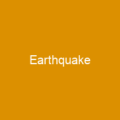Unveiling the Devastating 1707 Hōei Earthquake
The 1707 Hōei earthquake was a seismic event that shook Japan to its core, leaving an indelible mark on history and nature itself. Imagine if the ground beneath your feet could suddenly shift, swallowing everything in its path – that’s what this earthquake felt like for those who lived through it.
When and Where Did It Happen?
The 1707 Hōei earthquake struck at around 13:45 local time on October 28, a date etched in the annals of Japanese history. The epicenter was located south-central Japan, with its destructive force felt across southwestern Honshu, Shikoku, and southeastern Kyūshū. Can you imagine the shockwaves rippling through these regions like ripples in a pond after a stone is thrown?
How Strong Was It?
The earthquake had an estimated magnitude of 8.6 ML or 8.7 Mw, making it one of the strongest recorded events in Japan’s history. To put this into perspective, think about the energy released being comparable to that of a large nuclear explosion. The Nankai megathrust ruptured simultaneously, triggering a destructive tsunami – a wave so powerful it could travel across oceans and devastate coastal areas.
The Devastating Impact
Over 5,000 casualties were reported as a result of the earthquake and subsequent tsunami. The destruction was widespread, with buildings collapsing and lives lost in an instant. One can only wonder what it must have been like to witness such chaos unfold before their eyes.
Aftershocks and Further Devastation
Just 49 days later, on February 13, 1708, a major aftershock struck the Kii Peninsula. This event generated another tsunami that flooded salt fields in Kii and broke embankments in Ise. The run-up heights of this tsunami reached up to 25.7 meters (84 feet), affecting the southwestern coast of Kochi. Can you imagine the sheer force required to cause such massive flooding?
Mount Fuji’s Unusual Eruption
The earthquake might have also triggered a shift in static stress, leading to an eruption of Mount Fuji on December 16, 1707 – just 49 days after the main event. This is particularly intriguing as it suggests that seismic activity can influence volcanic behavior, creating a complex interplay between tectonic and magmatic forces.
Was this earthquake merely an isolated incident, or did it set off a chain of events that would shape Japan’s geological future? The 1707 Hōei earthquake serves as a stark reminder of nature’s power and the interconnectedness of our planet’s systems.

The 1707 Hōei earthquake stands as a testament to the unpredictable and powerful forces of nature. It reminds us that while we can build structures and societies, there are still elements beyond our control that can reshape our world in an instant. Understanding these events helps us prepare for future challenges and appreciate the resilience of both human beings and the natural world.
You want to know more about 1707 Hōei earthquake?
This page is based on the article 1707 Hōei earthquake published in Wikipedia (retrieved on March 11, 2025) and was automatically summarized using artificial intelligence.






